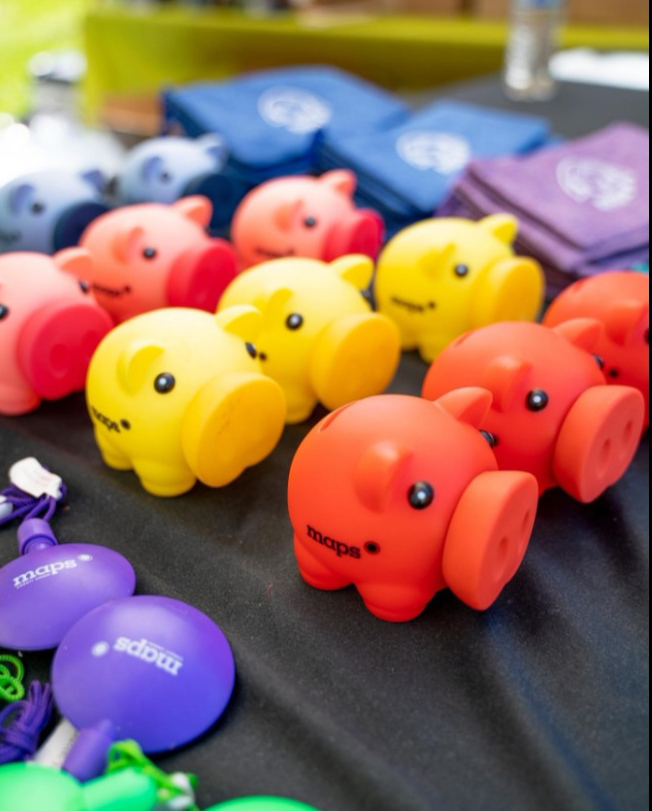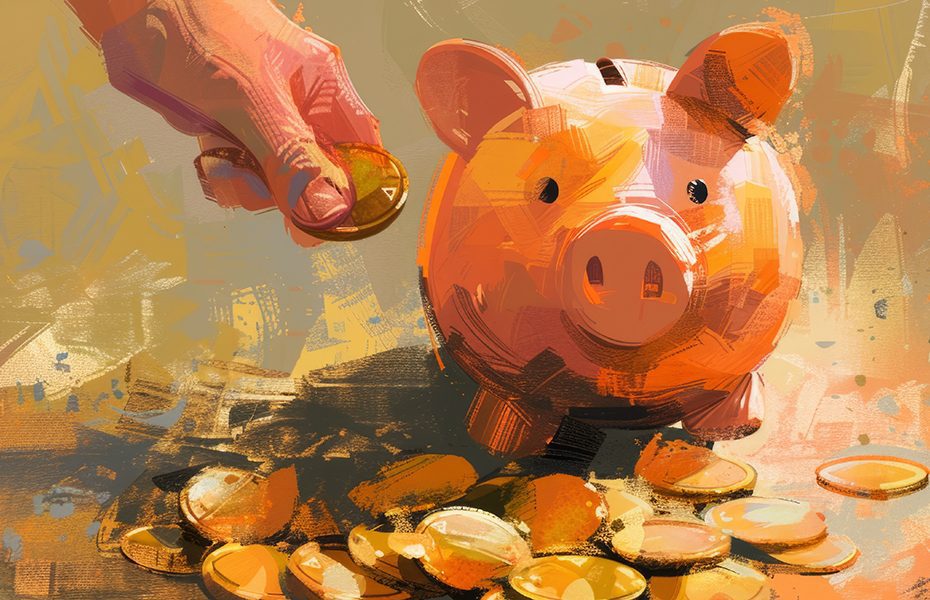As we wrap up Youth Savings Month, we’re taking one more peek at the early days of money. This time, we’ll explore the history of piggy banks. Did you know that when you drop a coin into your piggy bank, you’re not just saving money—you’re carrying on a tradition that’s been around for centuries?
But have you ever wondered why we keep our coins in pig-shaped containers instead of chickens, bears, or cats? The answers are as muddy as a pigpen.
The Muddy Piggy Bank Origin Stories
One popular (but unproven) theory about how piggy banks came to be relies on stories about the old English word “pygg.” According to some, pygg was a type of earthenware clay used to make everything from plates to water vessels.
This theory was popularized by the 1989 book The Extraordinary Origins of Everyday Things by Charles Panati. He speculates that over time, the name of the clay was forgotten, and “pygg jar” simply became a “pig jar”. “By the eighteenth century in England,” he writes, “Potters, not usually etymologists, simply cast the bank in the shape of its common, everyday name.” Many etymologists have dismissed Panati’s theory, but the story persists.
Other Theories
Some historians claim the term “piggy bank” comes from the Scottish term “pirlie pig”. This refers to a type of crockery used as far back as the late 1200s. Pirlie (or pirly) pigs are money boxes with horizontal or vertical slits to poke (a.k.a., “pyrl”) coins through.
Other explanations about piggy banks point to Indonesia and the Javanese term “cèlèngan”. The word is still used today and is considered a general term for a money-saving vessel. However, it translates to “the likeness of a wild boar”. Why? Perhaps because boars were symbolic of not only wealth and power but also fertility and generosity. In museums today, you can find pig-shaped money jars that date back to the 12th century on Java. Some of these cèlèngan were likely used in households, others may have been royal gifts.
The Murky Truth
Whether you believe the lore or not, one thing is true: People have been saving money in jars since at least the Middle Ages. Eventually, they started making money jars in the shape of pigs because pigs were long associated with wealth and good luck.
Piggy Bank Superstitions
In many cultures, pigs represent good fortune. In Germany and Austria, for example, Glücksschweine or “Lucky Pigs” are given around Christmas and New Year’s to welcome luck and prosperity. These are often made from bread or marzipan, but occasionally from fabric, wood, metal, or ceramic.
The pig is also the last animal in the Chinese zodiac. People born under that sign are considered calm, cheerful, intelligent, optimistic, and free-spirited.
So, why are pigs considered lucky? For one, they provided food, leather, and other valuable resources. They also have a habit of rooting forward—or pushing the ground with its snout—in search of food or comfort. This go-getter behavior symbolizes optimism and a positive outlook for the road ahead.
Modern-Day Pigs

Today, piggy banks come in all shapes and sizes. Many of you have a fat ceramic pig or a plastic Maps piggy bank at home. (If you don’t, stop by a Maps branch and ask how to get one.*) But no matter how fancy or simple they are, the idea behind the piggy bank remains the same. These pigs encourage us to save our money for the future. So, whether you’re saving for a special toy, a big trip, or something else, a piggy bank is a fun and helpful way to reach your savings goals!
And who knows? Maybe your piggy bank will bring you a little extra luck and prosperity along the way!
*For our youth savers, while supplies last.
